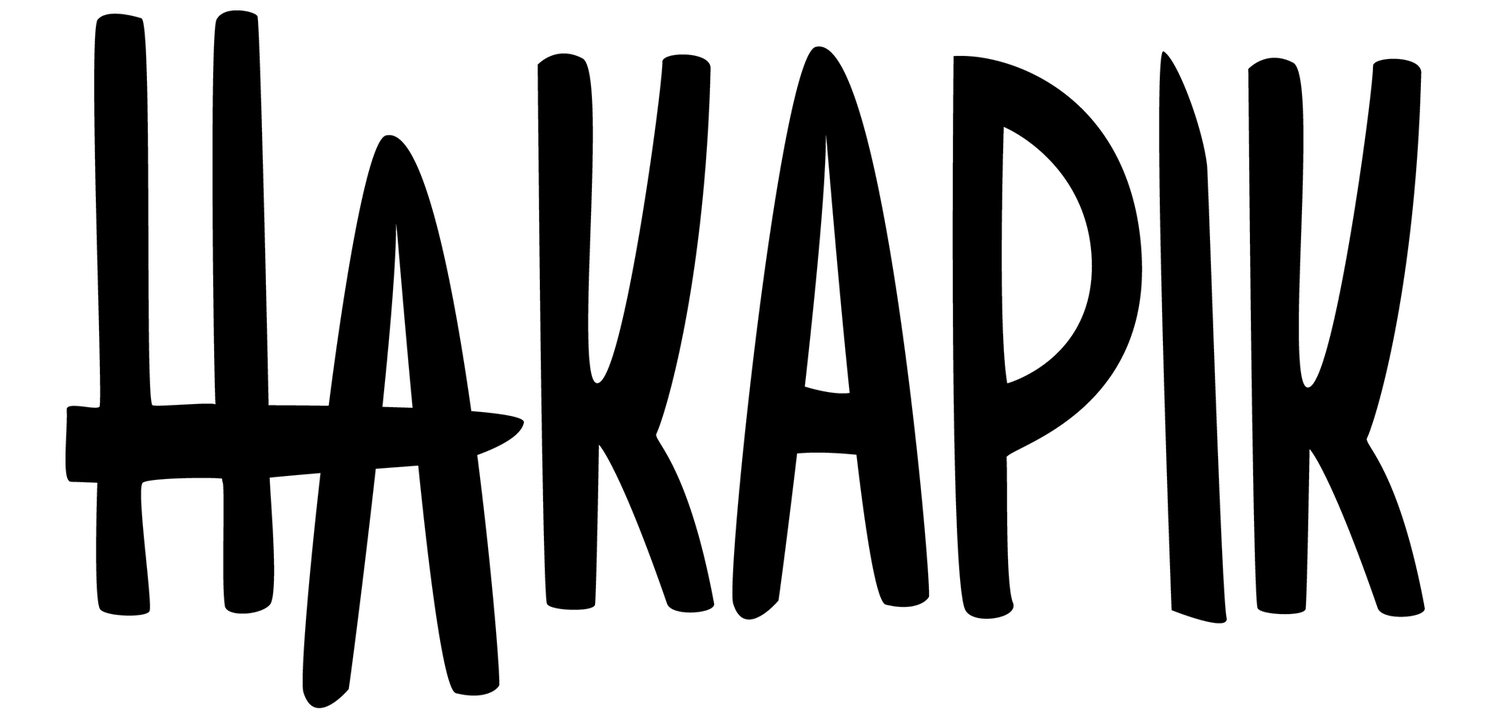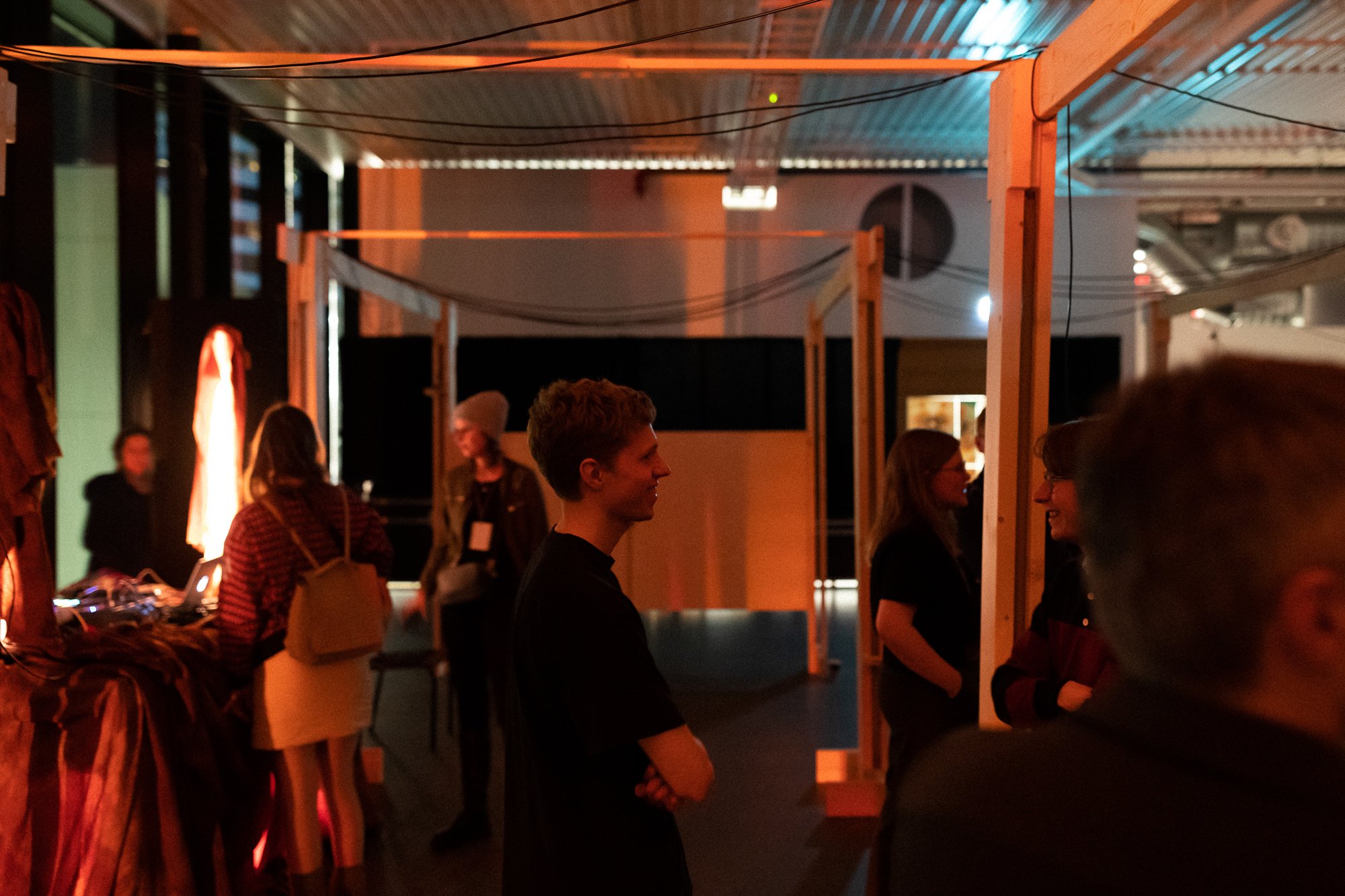A pleasurable low-end rhythmic cacophony
Review of Shape from Sound, performance and installation by Åsne Kummenje Mellem and Anders Jakobsen. Part of Insomnia Festival 2023. Presented at Havneterminalen, Prostneset. 20.10.2023, Tromsø.
Anders Jakobsen and Åsne Kummeneje Mellem’s installation-come-performance, Shape from Sound, was a truly innovative and immersive interdisciplinary showcase of all that is good about the visual art / experimental music crossovers that the Insomnia Festival presents each year.
By James Lee
Tromsø’s annual Insomnia Festival is probably commonly understood and, I would dare say, enjoyed by most of its attendees as an electronic dance music festival. In reality, it is as much about the experimental and an embrace of the new, the futuristic, even. Its website states, for example, one of its aims is to “continually push the limits of electronic music culture”. For the last fifty or so years, since the birth of house music, electronic music has been not just central to, but at the forefront of Western music’s experimental side; this festival shares this endeavouring spirit.
This event featuring Tromsø’s own Anders Jakobsen and Åsne Kummeneje Mellem combines a performance inside an installation that is, in-and-of itself, an instrument. This is the first collaboration between Jakobsen– who is from the worlds of architecture and electronic music– and Mellem– who is from the world of the visual arts.
There is a famous maxim in the Anglosphere that “Writing about music is like dancing to architecture”, a saying attempting to convey the sheer incompatibility, redundancy or pointlessness of trying to understand music through words. It's so famous it even has its own wikipedia page. It is, of course, a much contested saying: has there ever been a time where we have used more words in our relationships to music? From Twitter to online forums to legacy media music writing to chats with friends: music and words to describe the music or the artist have become inseparably linked together– the die-hards of stan and fan “armies” perhaps seem to reduce the actual music to something less important than the writing about the music.
I am in the unenviable position of writing about music specifically not just made for, but made from a specific piece of architecture, architecture that presumably is inviting an audience to dance within.
The installation could be found within a sizable temporarily occupied space within the boat and bus terminal in Tromsø (rather than the main concert venues of the student house Driv). Standard wooden construction beams, often with their barcode sticker still attached, were built into the form of rectangular structure which allowed one to walk freely both within and even around it; on two of the sides, standard wooden sheets were used to create partial walls, with a “door” allowing a passage both in and out of the structure on the two short ends. One long side was located about a metre from roof to floor in black fabric, and the other long side of the rectangle faced the ceiling-to-floor glass of the room itself. The DJ’s (Anders Jakobsen) equipment was placed on a table, which was in turn placed in between two (relatively large) P.A stacks.
Mounted onto the sheets and wooden beams of the installation were small hammer-“robots” that pounded away to create the rhythmic pulses. The timbres produced were remarkable. De-tuned hi-hat sounds were produced by these small robot hammers hitting the sides of the wooden planks; hammers hitting wooden sheets produced a kick-drum like sound. Synth sounds (played by Jackoben from a laptop via a PA) swirled and turned into a drone in the mid and upper frequency registers in this space, floating above the rhythmic elements.
The low-end rhythmic cacophony was a pleasure to experience. Due to the limited number of attendees for the event, it was possible to walk around and to experience all of the structure like an artwork, like how one would walk in a large installation or around a large sculpture at an art gallery. Nobody here was dancing – which may have influenced me and made me revert to acting like I was walking around at an art gallery, rather than at a concert. Many others did the same and walked freely around the installation. The lack of people was definitely a plus – a tip if this is to be recreated would be to limit the amount of audience who would be allowed in.
I found a sonic sweet spot around half way through the performance for myself, standing right in the middle, around four or five metres back from Jakobsen (Mellem was not a part of the performance, per se), I became aware of the becoming-fluid of the crowd, shifting their perspectives and investigating both the performance space and “performers” (the little hammers) just as I had done. It was really pleasurable to stand in this spot and close my eyes, allowing myself to focus on the complimentary but different reverberations and musical information coming on either side.
As I was getting into it (“feeling the music”, with my eyes closed), I heard a lot of movement of people going towards one side of the room. I opened my eyes to see our DJ gone, with just the lid of his Macbook now visible on the table. Outside of the performance space, on a table to the other side of the “wall”, Jakobsen went to degrade and deform the drone sounds using a series of rack-mounted effect modules. I had noticed on my wanderings previously a contact mic there too, right next to the modules, but did not know if it was from a previous performance or would somehow be involved in this one.
Here the awful thought of “how are these sounds being made?” came into my head. I started thinking about the technicalities of all this. What is synced via MIDI? How manipulated are these sounds coming from the sheets, how unprocessed was all this? Were the drums being fed back into the PA and subwoofer to produce their kick-drum like sound? But in the end, none of these questions matter.
For a good duration of this performance, I was taken aback, totally enraptured by aspects of this installation; to hear the pushing and pulling rhythms, with reverberations changing how one feels the rhythms, with the synth sounds whooshing, with every movement of one’s body changing how one experienced the music on a fundamental level, experiences that all built and created such sensations of joy. There was ecstasy in the music itself and the performers (and I include the robots in this category of performers as they even looked like they were enjoying themselves).
Jackobsen came back to the table for the final minutes of the performance. By that stage I had started to wander out of the performance area to the windows on the side of the room and look out to the other side of the landscape across the water. As the synth sounds and their reverb trails started to fade, it gave a grandeur to the view out of the window, as I looked down on the cars coming into the city from the south. I thought of Kraftverk and their song “Autobahn” and how their first albums – despite clearly being made fifty years ago – sound exciting because they were trying to do something new, futuristic even. A funny thought popped into my head: wooden planks and sheets are stealing the show at an electronic music festival.
I, for one, am glad experimentation and boundary pushing are alive and well in Tromsø and in the city’s electronic music scene.











